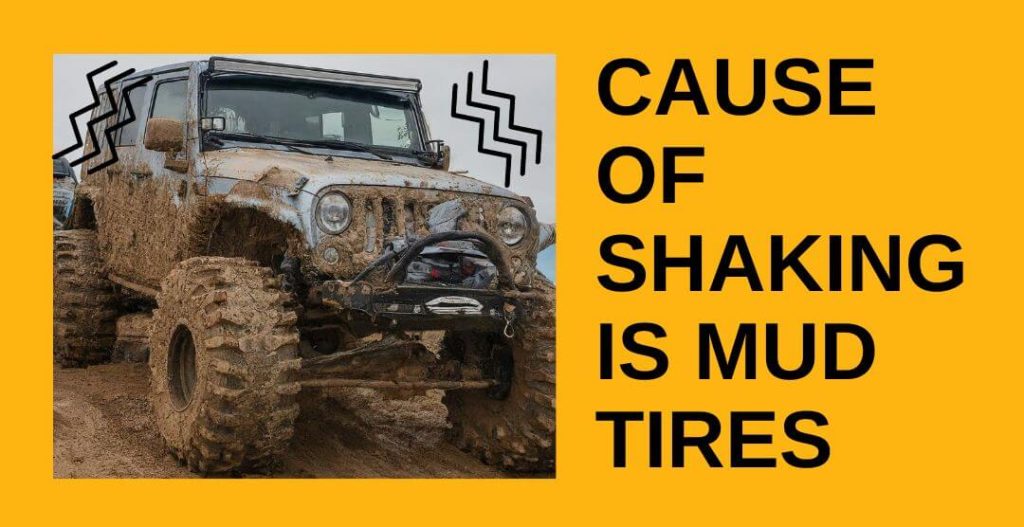Taming the Tremors: Can Mud Tires Cause Shaking and What You Can Do About It

For off-road enthusiasts, mud tires are the holy grail of conquering challenging terrain. Their aggressive tread patterns, deep lugs, and sidewall reinforcements provide exceptional grip in mud, rocks, and loose surfaces. However, this enhanced capability comes with a potential trade-off: vibrations sometimes referred to as shaking.
While a smooth ride is a hallmark of highway driving, mud tires can introduce a shimmy or wobble at certain speeds. This can be disconcerting for drivers accustomed to the predictability of all-season tires. But fear not, intrepid adventurer! This guide will delve into the reasons behind mud tire shaking and equip you with the knowledge to ensure a comfortable (or at least manageable) off-road journey.
Understanding the Wobble: Why Mud Tires Can Cause Shaking
Unlike their street-oriented counterparts, mud tires prioritize traction over a silky-smooth ride. Here’s a breakdown of the key factors that contribute to shaking:
- Aggressive Tread Pattern: Mud tires boast a network of deep, chunky lugs designed to bite into loose surfaces. These pronounced features can cause an imbalance, particularly when the tires are new. Imagine the difference between running on smooth pavement and uneven cobblestones – that’s the fundamental concept at play.
- Uneven Wear: Mud terrain tires are susceptible to uneven wear patterns. Over time, the aggressive lugs can wear down at different rates, creating an inconsistency in the tire’s overall circumference. This inconsistency translates into a shaking sensation as the tire rotates. Factors like improper inflation pressure, aggressive driving styles, and unbalanced weight distribution can accelerate uneven wear.
- Heavier Weight: Mud tires are generally heavier than all-season tires due to their thicker construction and additional materials. This increased weight can put more stress on the suspension and wheel components, potentially leading to vibrations, especially if these components are worn or damaged.
The Speed Factor: Why Shaking May Vary with Speed
You might notice that the shaking sensation isn’t constant. It often becomes more pronounced at lower speeds and may even diminish or disappear entirely at higher speeds. There are two primary reasons:
- Tire Harmonics: As the tire rotates, its various parts vibrate at different frequencies. At lower speeds, these vibrations may not coincide, resulting in a noticeable shaking. However, as the speed increases, these vibrations can sometimes synchronize and partially cancel each other out, leading to a smoother ride.
- Suspension Resonance: Every vehicle’s suspension system has a natural resonant frequency. At lower speeds, the shaking from the tires can resonate with the suspension, amplifying the feeling in the cabin. Higher speeds may move the shaking frequency outside the suspension’s resonance zone, reducing the perceived effect.
It’s important to remember that these explanations are simplifications. The exact interplay between tire characteristics, suspension dynamics, and road conditions can be complex and vary depending on your specific vehicle and tire setup.
Taming the Tremble: Solutions for a Smoother Off-Road Ride
While mud tires inherently introduce some level of shaking, there are steps you can take to minimize it and ensure a safer, more enjoyable off-road experience:
- Tire Maintenance: Regular maintenance is paramount. Rotate your tires frequently (every 5,000 miles is a good rule of thumb) to promote even wear. Maintain proper inflation pressure as specified by your vehicle’s manufacturer and adjust it based on load and off-road conditions. Visually inspect your tires for any damage or uneven wear patterns.
- Balancing: Get your mud tires balanced regularly, especially after any off-road excursions or significant tire wear. Balancing helps to counteract any weight imbalances that can contribute to shaking.
- Alignment: Proper wheel alignment ensures that your tires make contact with the road at optimal angles. Misalignment can lead to premature tire wear and vibrations.
- Suspension Inspection: Have your suspension system inspected by a qualified mechanic to ensure there are no worn or damaged components that might amplify the shaking caused by the mud tires.
- Driving Habits: While mud tires are designed for off-road prowess, avoiding aggressive driving maneuvers on pavement can help extend their lifespan and minimize shaking.
Living with the Wobble: Finding the Off-Road Sweet Spot
Even with proper maintenance and adjustments, some level of shaking might be inevitable with mud tires. Here are some additional considerations:
- Tire Selection: Different brands and models of mud tires have varying tread patterns and weights. Researching and selecting tires known for a smoother ride on pavement can help minimize shaking.
- Speed Limits: Accept that mud tires are not designed for high-speed cruising. While they may handle highway speeds adequately, adjusting your driving habits to maintain a more moderate pace on the highway can help reduce shaking and improve overall comfort.
- Alternative Tires: If conquering extreme off-road terrain isn’t your primary goal, consider all-terrain tires. They offer a good balance between off-road capability and on-road comfort with less pronounced shaking.
Conclusion:
Mud tires are a fantastic choice for venturing off the beaten path. They provide the confidence and capability to tackle challenging terrain that all-season tires simply can’t handle. However, this enhanced capability comes with the potential trade-off of shaking, particularly at lower speeds.
By understanding the causes of shaking and implementing proper maintenance practices, you can minimize the effect and ensure a safe and enjoyable off-road experience. Remember, a little wobble is a small price to pay for the freedom to explore uncharted territories. So, embrace the shake, hit the trails, and conquer the mud with confidence!
Leave a Reply